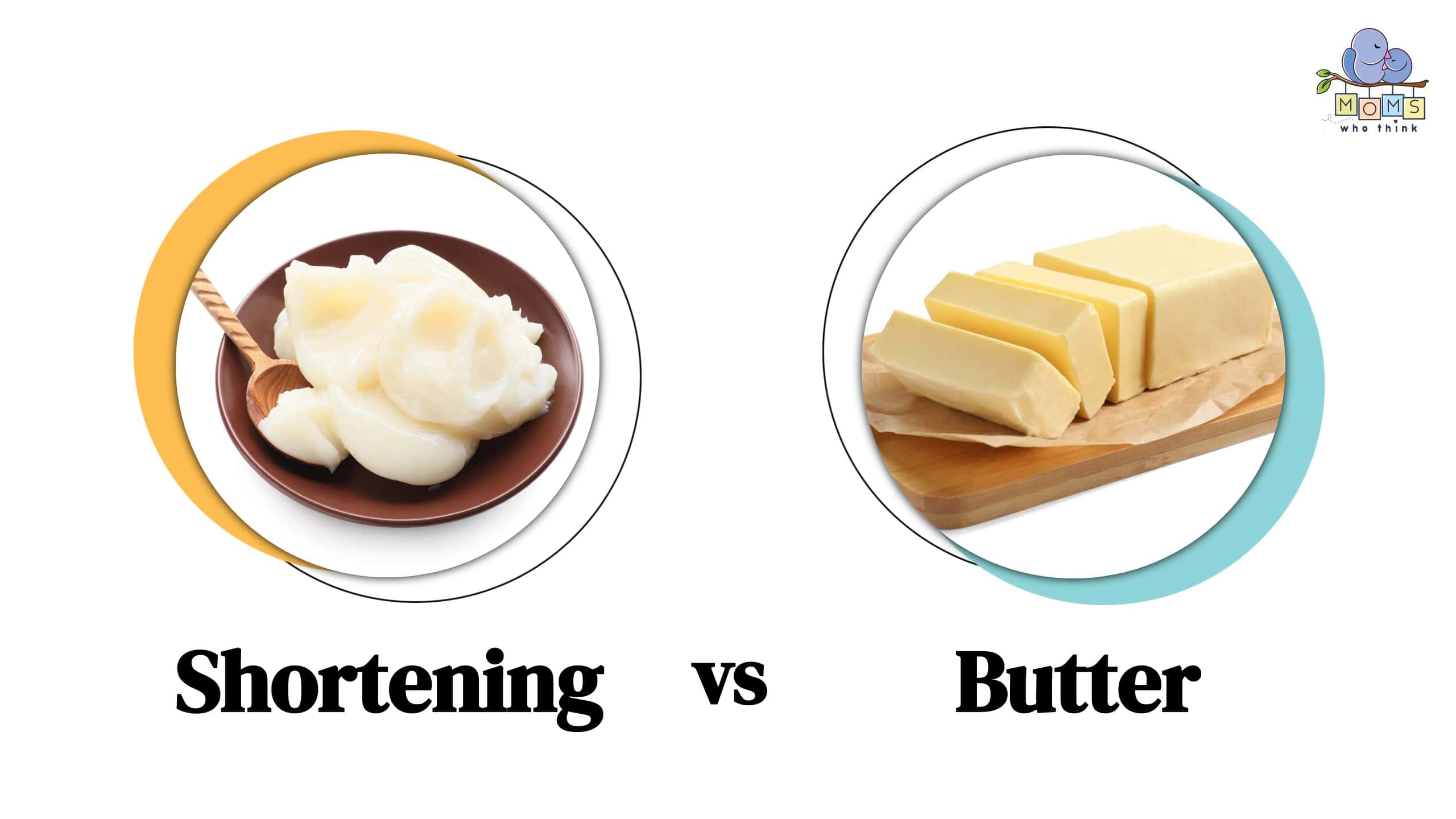If you’re a baking enthusiast or a chef in the kitchen – you probably know about the age-old debate between shortening vs. butter. Two fats that are used in everyday recipes and add their own share of flavor. But what you may not realize is the good, bad, and ugly side of these fats. In this article, we’ll break it down for you. And you’ll discover important factors to consider for your health and cooking!
What's What?
First up is shortening. Think of it like the chameleon of the kitchen. It's 100% solid fat made from animal fats and/or hydrogenated vegetable oils like soybean, cottonseed, or palm oil. Think of brands such as Crisco, an everyday staple in the kitchen of many American households.
Shortening's flavor: It's not strong. In fact, it has more of a neutral flavor. And because of this, it’s used in a wide variety of recipes. It’s what gives pies their flaky crusts and contributes to cookies' tenderness!
Next up is butter. This golden creamy delight is made from churning cream or milk.
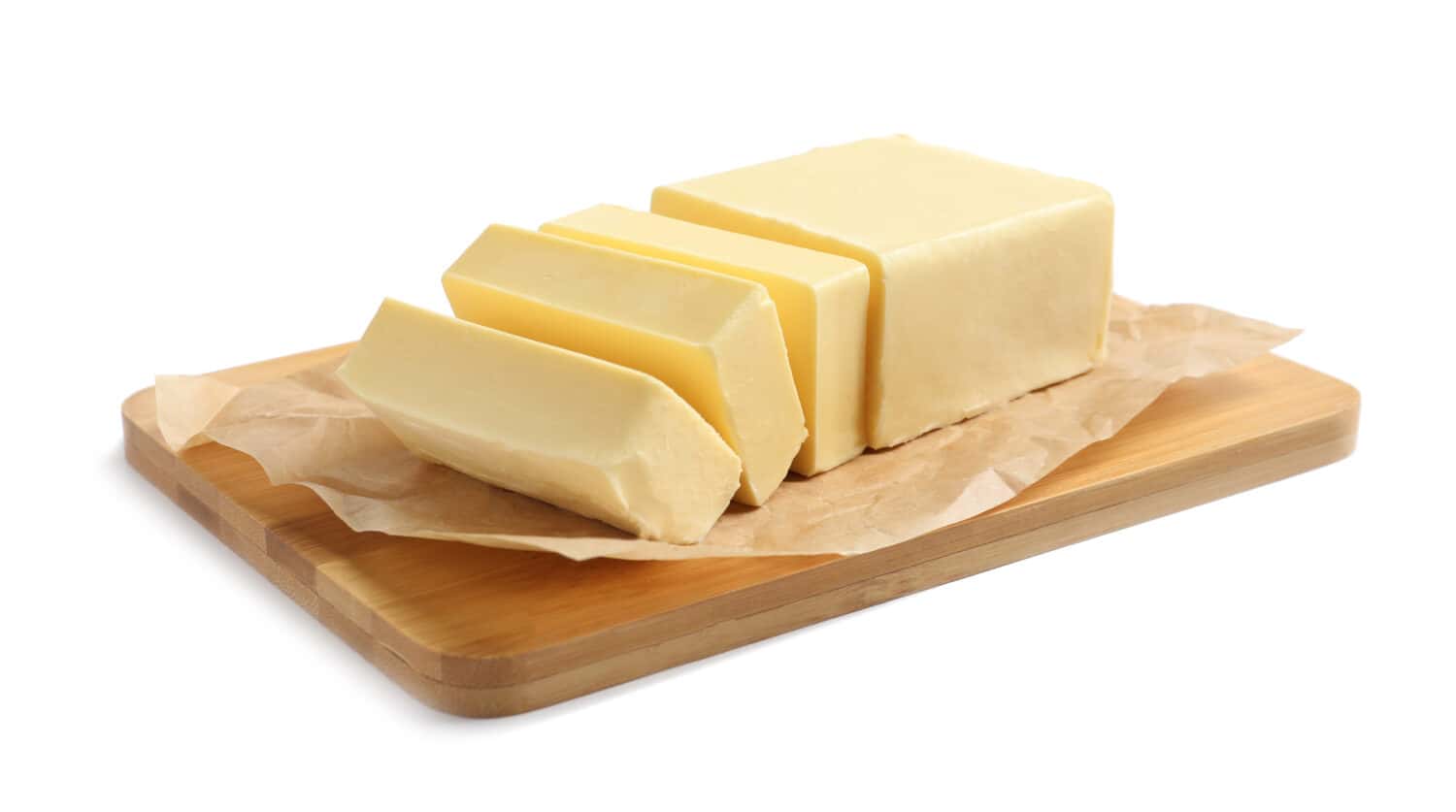
©New Africa/Shutterstock.com
Butter's flavor: The churning process creates a rich, almost addictive flavor. And because of its low melting point, it adds a mouth-watering tender touch to baked goods such as cookies, muffins, cakes, pastries, and even your morning toast!
- The must-have convenient reference guide for every home cook!
- Includes more than 8,000 substitutions for ingredients, cookware, and techniques.
- Save time and money on by avoiding trips to grab that "missing" ingredient you don't really need.
Because both shortening and butter are solid at room temperature, they are considered saturated fats.
Are saturated fats bad for your health?
It's called “saturated” because the fat’s chemical structure is full of hydrogen atoms. This is what helps convert liquid fat into solids, as discussed earlier in this article. Here’s where the problem comes in: Diets high in saturated fats can raise the levels of “bad” LDL cholesterol in your blood, which increases the risk of heart disease and other health issues.
And even though some recent research suggests that the impact of saturated fats might not be as severe as once thought, the American Heart Association still recommends eating these kind of fats in moderation opt for healthier fats like unsaturated fats found in nuts, seeds, and fish for better heart health.
The Ugly Side of Shortening
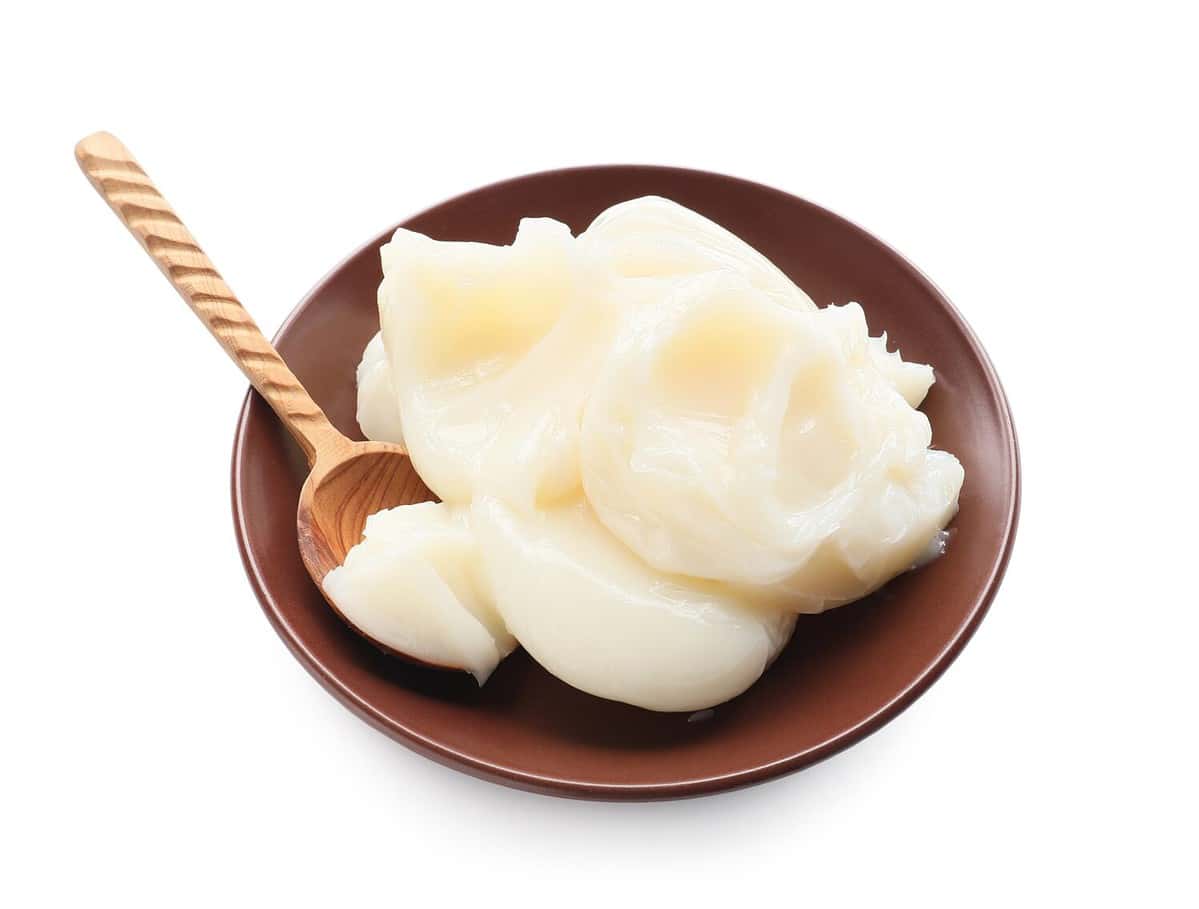
©Pixel-Shot/Shutterstock.com
In the past, shortening got a very bad rap. Why? Because of the hydrogenation process. You see, during this process, liquid fats are turned into solids by adding a gas called hydrogen to the fat. This allows the fat to be stored at room temperature.
With this kind of change in the fat's structure – foods can sit longer on the shelf. That’s why some foods that have shortening can last from 6 months to 2 years without going bad. But here’s where it got problematic – at least for your health. This process can also create something called “trans fats” or “partially hydrogenated oil”.
And according to the Mayo Clinic, trans fats are considered double-trouble for your heart health. They can increase your “bad” cholesterol – which is healthier at a lower level. And it can decrease your “good” cholesterol – which is healthier at a higher level.
So because of these health concerns, trans fats are now banned in the United States. However, don’t go celebrating too much. But there’s something else you need to know, especially because U.S. nutrition labeling can be confusing. For instance, in the United States, if a company has a food product that contains 0.5 grams of trans fat in a serving, they can still put on their labels “zero grams.”
Now, that might not seem like a lot.
How Much is Too Much?
If you consume multiple servings of processed foods that claim to have “zero grams” of trans fats on their labels, but actually contain less than 0.5 grams per serving, do you see where things can get tricky? It’s super easy for these trans fats to add up fast in your daily meals!
In order for 100% shortening to contain a true ZERO trans fats, it would have to go through a full hydrogenation process. But that would result in a super solid, hard fat that isn’t easily spreadable like the way shortening is. That’s why the fully hydrogenated shortenings are mixed with a liquid oil and go through another process called interesterification. That’s just a fancy schmancy way of saying that the shortening becomes easier to spread without any trace of trans fats. It’s kind of like if you were to mix butter with oil so it can spread smoothly on your toast. Makes since?
Bottom line: Take your time and read food labels. Many modern shortenings are now trans-fat-free, which is a positive step. Just keep an eye on labels and pick options without trans fats for a healthier choice. Choose foods that have a shorter shelf life so you can enjoy a longer happier life!
What About Butter?
Here's the deal with butter: Yes — it's got saturated fats. And yes – those were once seen as dietary villains. Remember the fat-free craze of the 90s? That was the birth of the iconic spray butter alternative “I can’t believe it’s not butter!” ads. But what does research show today?
While scientists continue to debate the health benefits of butter – here’s what we do know. When butter is used in moderation, according to the American Heart Association it can be a healthy part of your diet. For example, butter is a source of vitamins such as A which helps prevent vision loss, bone-building vitamin D and E which helps prevent cell damage. It also contains calcium.
Did you know?
One tablespoon of shortening contains 113 calories and 13 grams of fat
- The must-have convenient reference guide for every home cook!
- Includes more than 8,000 substitutions for ingredients, cookware, and techniques.
- Save time and money on by avoiding trips to grab that "missing" ingredient you don't really need.
One tablespoon of unsalted butter contains 102 calories and 11 grams of fat.
Quality Matters Too
You gain more nutritional value in choosing grass-fed butter. Why? Here are three reasons:

©Jan K/Shutterstock.com
Reason #1 – Cows graze on pasture:
In other words, because they have a nutrient-rich diet right from the earth. For example, this includes higher levels of essential nutrients like vitamins A, D, E, and K, as well as beneficial compounds like omega-3 fatty acids and antioxidants when compared to regular cow feed.
Reason #2 – Great source of omega-3 and omega-6 fatty acids:
Omega-3 and omega-6 fatty acids are known for their anti-inflammatory properties and potential heart health benefits. The pasture diet of grass-fed cows typically leads to a more balanced ratio of omega-6 to omega-3 fatty acids.
Reason # 3 – Conjugated Linoleic Acid (CLA):
The conjugated linoleic acid (CLA), a type of healthy fat with potential benefits for weight management, reducing body fat, and supporting metabolic health. And grass-fed butter contains high amounts of CLA.
And here’s a BONUS reason – No Artificial Additives:
Grass-fed butter is often produced using more natural methods, which may mean fewer or no artificial additives, preservatives, or hormones.
Bottom line: It’s true – grass-fed butter offers these potential benefits. However, it's still a source of saturated fat and calories. What’s the point? Moderation is key. This is especially true if you're trying to watch your weight. Calories can creep up in all kinds of places. And butter is no exception. So when choosing grass-fed butter, opt for products from reputable sources to ensure you're getting the full spectrum of benefits without compromising quality.
Final Thoughts
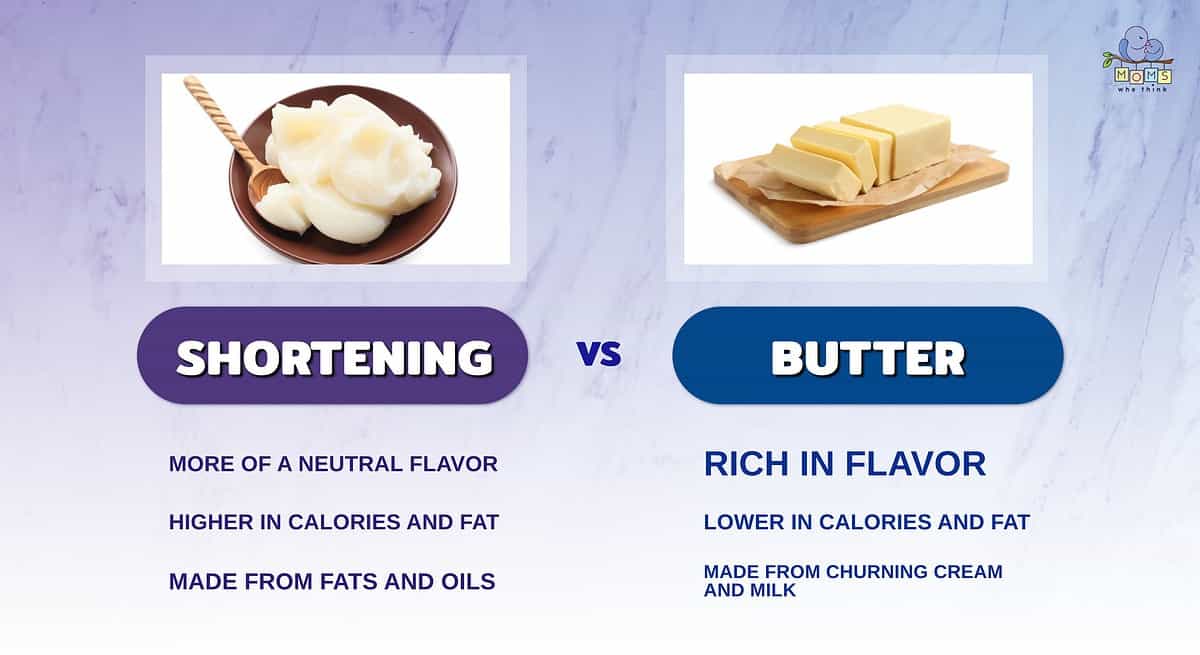
- Butter is known for its rich flavor, which makes it a popular addition in a variety of recipes. Shortening, on the other hand, has a more neutral flavor.
- Shortening has more calories and fat compared to butter.
- Butter is made from churning cream and milk, while shortening is made from fats and oils.
Now that you have a better understanding on the differences between shortening vs. butter, you can make an informed choice for your health. Both have their unique qualities for baking and cooking. For example, butter brings rich flavor and potential health benefits – especially grass-fed butter. On the other hand, shortening offers a neutral base creating versatility in baking. Either way, please be mindful of moderation and consider the specific needs of your recipes. You may find that you prefer choosing healthier alternatives to shortening and butter. All in all, your striking a balance between these options – or others – can lead to delicious results that support your and your family's overall health goals!
Try this molasses sugar cookie recipe:
Print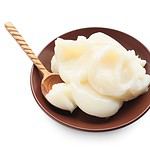
Molasses Sugar Cookies With Shortening
Ingredients
1 1/2 cups shortening
2 cups white sugar
1/2 cup molasses
2 eggs
4 cups all-purpose flour
4 teaspoons baking soda
2 teaspoons ground cinnamon
1 teaspoon ground cloves
1 teaspoon ground ginger
1 teaspoon salt
Instructions
1. Melt the shortening in a large pan on the stove, and cool.
2. Add sugar, eggs, and molasses, beat well.
3. In a separate bowl, sift dry ingredients together and add to the pan. Mix well and chill 3 hours or overnight.
4. Form into walnut-size balls. Roll in granulated sugar. Place on greased cookie sheet about 2 inches apart.
5. Bake at 375 degrees F (190 degrees C) for 8-10 minutes. Store in an airtight container.
